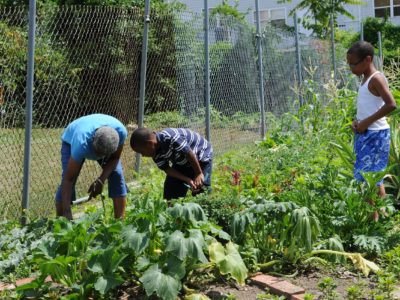
Pioneering Urban System Science
Pioneering Urban System Science
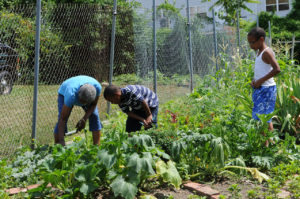
Credit: BES LTER
Researchers at BES LTER developed new theory and methods for characterizing the multidimensional, multidisciplinary nature of urban ecosystems. This work sparked the development of a new “urban systems science” which has become a key component of sustainability science across the globe.

Understanding Urban Watersheds
Understanding Urban Watersheds
Baltimore LTER research showed that nutrient cycling and retention in urban watersheds are driven by complex dynamics, with surprisingly high nitrogen retention, climate sensitivity, and surface water-groundwater interactions. These studies have been a foundation for novel analyses of how ecosystems are affected by contaminants of emerging concern.
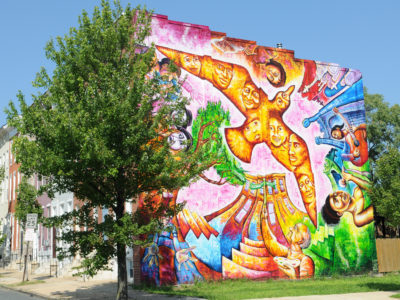
Recognizing Social Feedbacks
Recognizing Social Feedbacks
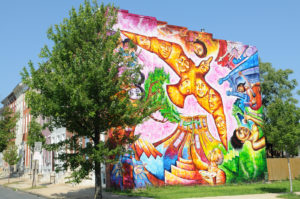
Credit: BES LTER
The BES LTER Household Telephone Survey provided information on environmental knowledge, perceptions, values, and behaviors of residents, their influence on ecosystem structure and function, and the ways that ecosystem structure and function may affect residents’ physical activity, social cohesion, perception of neighborhood desirability, and willingness to relocate.

Unexpected Urban Biodiversity

Mapping Urban Lands
Mapping Urban Lands
Traditional land classifications in the US emphasized the contrast between urban or built-up versus wild or managed lands. Based on that fundamental split, urban lands have been subdivided into such categories as commercial, residential, transportation, industrial, and mixed urban. For some purposes, this relatively coarse classification is useful. However, scientists interested in the joint social and ecological function within complex urban areas found the traditional classification to be too coarse. This was not a matter of resolution of remotely sensed images, but because the theory behind the classification assumed land cover to be coarsely differentiated. When social scientists and ecologists tried to use the traditional classification to understand how the complex land covers they observed in cities and suburban areas linked to ecosystem functions, they were disappointed. This led them to develop a new way to classify the combined social and ecological patchiness they observed in urban areas.
The new system is called HERCULES, which stands for High Ecological Resolution Classification for Urban Landscapes and Environmental Systems. The investigators started from first principles, and assumed that biological, physical, and social products together determine the structure of urban lands. They recognize three components of urban land cover:
- The nature of the ground surface
- The nature of any vegetation present
- The nature and cover of buildings
Each of the three cover types can account for from 0 to 100% of the surface of a patch.
Patches can be recognized based on an internally consistent mix of these three kinds of cover. In particular, the ground can be either bare or paved, vegetation can be trees and shrubs, or made up of crops, turf grasses, or other herbaceous plants, and buildings can be isolated low structures, large footprint structures of various heights, or rows of connected structures.
Urban socio-ecological research has benefitted because long-term changes in urban areas can be understood in detail using HERCULES. Under the traditional classification, change was only recorded when a patch shifted from one major category to another, such as from residential to commercial or transportation. HERCULES draws attention to more subtle changes, such as amount of pavement in a neighborhood, or losses or gains in vegetated cover over time, or the shifts in the extent of patches over time.
Unlike the traditional classifications, HERCULES allows researchers, planners, and decision makers to understand the combination of social artifacts and natural components throughout a metropolitan area. An example is the relationship of the amount of nitrate pollution in streams draining parts of the Gwynns Falls watershed of metropolitan Baltimore, MD with the land cover of those small watersheds. They found that nitrate pollution is statistically associated with changes in patch features as assessed by HERCULES, but is not predicted by the traditional classification. Such findings have contributed to regional policy decisions to increase tree canopy cover throughout urban regions as a stormwater improvement strategy. Such improvement is key to improving the environment of both local neighborhoods and the water quality of the Chesapeake Bay.


Perceptions of Justice
Perceptions of Justice
Twenty-five years of environmental justice scholarship shows that racial and ethnic minorities are more likely than whites to live near facilities that release toxins into the air, land, and water. Even when incomes are similar, racial and ethnic minorities are overrepresented in neighborhoods with polluting industry nearby.
In Baltimore, we find an unexpected pattern — white neighborhoods are more likely than African-American neighborhoods to be close to toxic releasing facilities. An examination of past policies, plans, and documents shows that the present pattern reflects past practices of occupational and residential segregation, and restriction of land use through zoning. Beginning in the 1920s, zoning restricted heavy industry to selected areas of the city, and the vast majority of current toxic facilities are found inside those boundaries set 90 years ago. Historically, many neighborhoods near factories were restricted mainly to white residents, enforced through segregation ordinances and restrictive covenants. Living close to factory work was a privilege afforded mainly to whites, and many of those neighborhoods have persisted for nearly a century. Past injustices regarding place of residence or occupation for African-Americans has thus resulted in the unusual pattern we see today.
Executive order 12898 mandates that all federal agencies “shall make achieving environmental justice part of its mission.” In order to eliminate environmental injustices, new research is necessary to understand the processes that lead to uneven and unfair patterns of environmental burdens. The case of Baltimore shows that environmental justice cannot be judged solely on present-day conditions. Decades of unjust practices, especially racial segregation, must be factored into an assessment of environmental justice. Such research is made possible by the long-term perspective afforded by the LTER program.

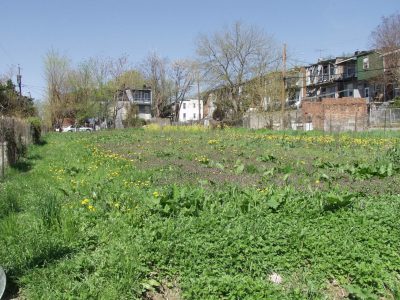
Islands of Green
Islands of Green
Urban ecosystems offer fundamentally new habitat for both animal and plant species. While originally viewed as largely disturbed environments, urban places are emerging not as ecological disasters, but rich environments where humans interact strongly with organisms, generating new habitat and assembling new ecological communities.
In Baltimore, green space is now known to harbor many species of plants, soil invertebrates, and birds. New species of soil invertebrates have been discovered in urban ecosystems. Furthermore, there are “hotspots” of urban biodiversity now known to harbor rare plant species. While non-native species, such as the European starling, House sparrow and House finch, are well-known to proliferate in the urban environment, there exists high spatial variation in the levels of biodiversity. This is, in part, due to how humans view and alter the environment to maintain “natural” areas, restore habitat and design the urban landscape. Such natural areas are now fundamental to the development of the sustainability plans for Baltimore County and Baltimore City.
New research by BES investigators into the mechanisms generating and maintaining biodiversity in urban ecosystems is being guided by a new conceptual framework built on findings by collaborations between ecologists and social scientists. For example, BES scientists have learned that the socioeconomic and lifestyle factors, such as household income, ethnicity and education are significantly related to vegetation factors such as herbaceous vegetation coverage. Furthermore, levels of plant species diversity were found to be maintained along an urban to rural gradient. These prime examples showing that there exists significant biodiversity in urban ecosystems are driving new hypotheses as to why, given the urban environment is viewed as such an ecologically-degraded ecosystems.
BES researchers are continuing their efforts to understand how people view and value nature, and what social factors drive decisions about which species are maintained at a location. One way to understand this is by revising traditional ecological theory to include new mechanisms of species associations. For example, while remnant habitats can largely be driven by larger scale habitat alteration and disturbance, people are strong contributors to actively maintaining species associations. People circumvent some key ecological factors that organisms experience in “pristine” systems by facilitating dispersal (e.g., planting gardens), eliminating undesirable species (e.g., weeding), and relaxing important ecological interactions (e.g., eliminating herbivory with pesticides). The next step in understanding how biodiversity is maintained in the urban environment will explicitly include the socioeconomic factors involved.
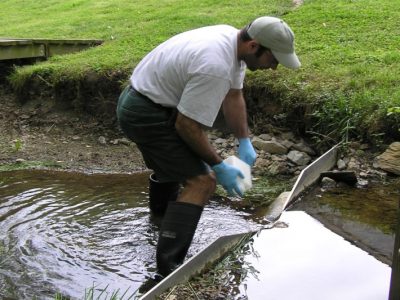
Urban Watersheds
Urban Watersheds
A watershed is the area of land where all of the water that is under it or drains off of it goes into the same place. The watershed approach, where the quantity and quality of water leaving a watershed is sampled is like urinalysis, where doctors monitor chemicals in the urine to assess a patient’s health. The watershed approach has been applied very successfully in many LTER sites to understand the structure and function of unmanaged ecosystems and to evaluate the long-term effects of forest management, air pollution and other human-associated activities on ecosystems. BES researchers hypothesized that the watershed approach would be a strong platform for comparing urban ecosystems with the more natural ecosystems in the LTER network. It was expected to be a powerful tool for understanding the importance of natural and human processes in these ecosystems. Furthermore, it should also be useful for evaluating long-term changes in urban ecosystem function in response to climate change and human activities such as sewage and stormwater infrastructure improvements.
Every week, BES scientists sample a network of urban, suburban, agricultural and forested watersheds. The USGS collects data on the flow of water at these sites and chemistry and hydrology data are combined to calculate nutrient input-output budgets for different watersheds.
Early results from BES watershed monitoring showed surprisingly high nitrogen retention in urban and suburban watersheds, i.e. nitrogen inputs from fertilizer and rainfall were much higher than outputs in the stream. While we had expected retention to be quite low (e.g, 20% of inputs), it was actually much higher (~70%). For comparison, our forested reference watershed had retention > 90%. This was an important result because it suggested that urban and suburban ecosystems were performing an important ecosystem service — preventing the movement of nitrogen to receiving waters such as the Chesapeake Bay. This result motivated extensive followup research to determine just where this retention was occurring — in soils and/or plants in riparian (streamside) zones, or in upland forests and lawns, or streams. BES research also aimed to discover how nitrogen retention might be increased even further through improvements in land management.
Continued long-term monitoring of BES watersheds through severe drought (2002) and high rainfall (2003, 2004) periods showed that the high nitrogen retention of urban watersheds was vulnerable to climate variation and change. Nitrogen retention dropped markedly in some urban watersheds during the high rainfall periods (e.g., from 70 down to 30%), while retention dropped much less in the forested watersheds. These results suggested that the resilience of urban watershed nitrogen retention functions may be low and has motivated new research on the factors that control this resilience.
Long-term watershed data has also been useful for evaluating the effects of sewage infrastructure improvements on urban ecosystem function. The City of Baltimore is in the process of spending $900 million to fix sanitary sewer infrastructure that leaks into streams. BES data has shown that fixing big leaks on small streams results in marked improvements in water quality but that effects on larger streams are harder to see and will require longer-term (> 10 years) monitoring.














